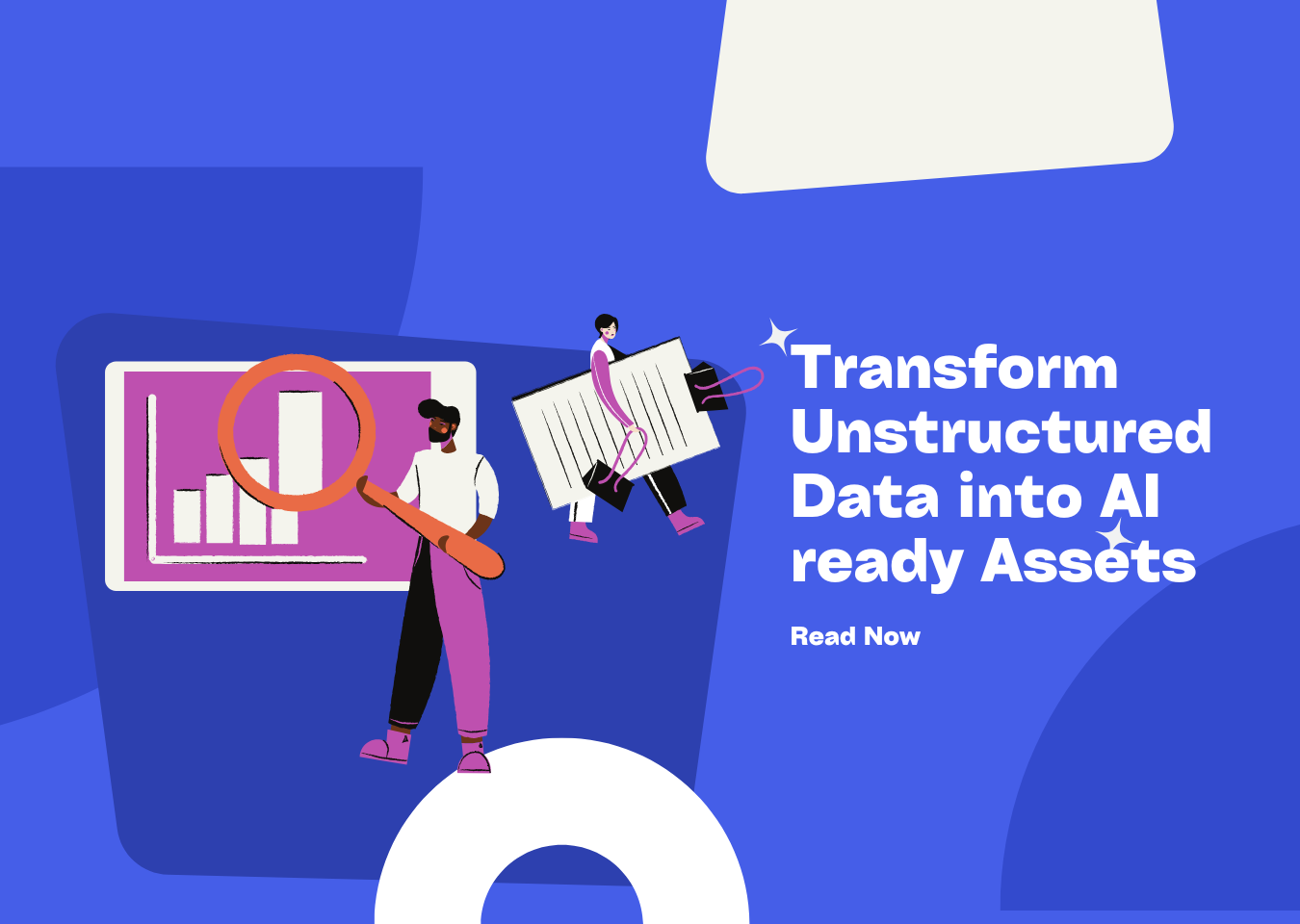Unlock the Power of RAG Applications A Comprehensive Guide


Demystifying RAG Models: How to Leverage the Best AI Retrieval Augmented Generation for Your Needs
Large Language Models (LLMs) have revolutionized the field of AI, yet they often struggle with hallucinations and lack real-time knowledge. Retrieval Augmented Generation (RAG) emerges as a powerful solution, seamlessly blending information retrieval with text generation. RAG is not just a trend; it’s becoming a necessity across various industries seeking more reliable and context-aware AI.
This article provides a comprehensive guide to RAG models and their transformative applications, offering insights for data scientists, machine learning engineers, and business leaders alike. Whether you’re looking to improve the accuracy of your AI systems or explore new use cases for LLMs, this guide will equip you with the knowledge you need to succeed.
What are RAG Models?
Retrieval Augmented Generation (RAG) enhances the accuracy and reliability of generative AI models by grounding them in external knowledge sources. Think of it as giving your AI a well-stocked library to consult before answering questions. The process involves two key components: retrieval and generation.
Retrieval focuses on fetching relevant information from a knowledge base, such as a vector database (e.g., Pinecone, Chroma, Weaviate), documents, or APIs. Generation then uses this retrieved information to augment the LLM’s response, ensuring it’s both informed and contextually relevant. The synergy between these two components is what sets RAG apart. However, effectively preparing your data for retrieval can be a complex task, especially when dealing with unstructured data. This is where UndatasIO comes in. UndatasIO transforms unstructured data into AI-ready assets, streamlining the RAG pipeline and ensuring your LLMs have access to high-quality, relevant information.
The difference between traditional LLMs and RAG models is stark. Traditional LLMs generate responses based solely on their training data, which can lead to inaccuracies or outdated information. RAG models, on the other hand, can access and incorporate real-time information, reducing hallucinations and improving accuracy. The benefits are clear: improved accuracy, reduced hallucinations, access to real-time information, and enhanced contextual understanding.
How RAG Works: A Step-by-Step Explanation
The RAG process can be broken down into three key steps: query input, retrieval stage, and generation stage. Let’s walk through each of these steps to understand how RAG models work.
- Query Input: It all starts with a user entering a query, just like a regular search.
- Retrieval Stage:
- The query is encoded into a vector embedding, a numerical representation of the query’s meaning.
- A similarity search is performed in the knowledge base to find the most relevant documents or passages based on these embeddings.
- The retrieved context is fed into the LLM.
- Generation Stage:
- The LLM uses the retrieved context to generate a response that is accurate, relevant, and contextually appropriate.
Embeddings and vector databases are the backbone of the retrieval stage. Vector databases store data in a way that allows for efficient similarity searches. Cosine similarity, for example, is a common technique used to measure the similarity between the query embedding and the embeddings of documents in the knowledge base. Understanding these components is crucial for optimizing RAG performance. To further enhance this stage, consider leveraging UndatasIO to preprocess and structure your data before embedding. This ensures cleaner, more accurate embeddings and improves the overall retrieval process.
Key Advantages of Using RAG
RAG models offer several compelling advantages over traditional LLMs. These advantages translate into tangible improvements in AI application performance and user experience. Let’s consider the improvements, or perhaps even transformations, RAG brings.
- Improved Accuracy: By grounding responses in factual information, RAG models provide more accurate and reliable answers.
- Reduced Hallucinations: RAG minimizes the risk of generating false or misleading information by relying on external knowledge.
- Enhanced Contextual Understanding: RAG models can understand the context of a query more effectively by retrieving relevant information.
- Access to Real-Time Information: RAG models can incorporate real-time data into their responses, making them more up-to-date.
- Increased Transparency: RAG models can often provide citations and references, increasing transparency and trust.
These advantages make RAG a valuable tool for a wide range of applications where accuracy and reliability are paramount. And with tools like UndatasIO, which excel at transforming complex, unstructured data into AI-ready formats, achieving these advantages becomes significantly easier and more efficient.
RAG Applications Across Industries
RAG applications are diverse and span numerous industries, demonstrating its versatility and potential impact. From healthcare to finance, RAG is transforming how businesses operate and how users interact with information.
- Healthcare: Imagine patients receiving accurate medical information or healthcare professionals accessing the latest research findings.
- Finance: Envision answering complex financial questions or providing personalized investment advice with real-time market data.
- Legal: Think of lawyers using RAG to assist with legal research and document review, saving time and improving accuracy.
- Customer Service: Consider personalized and informative customer support, resolving issues faster and more effectively.
- Education: Picture creating personalized learning experiences for students, tailoring content to their individual needs.
- E-commerce: What about improving product recommendations and search results, leading to increased sales and customer satisfaction?
These are not just hypothetical scenarios; they are real-world examples of successful RAG implementations driving significant ROI. The possibilities are vast, and the potential for innovation is immense. To fully capitalize on these opportunities, ensure your data is properly prepared and structured. UndatasIO can help you unlock the full potential of RAG by providing a robust solution for transforming unstructured data into valuable AI assets.
Choosing the Right RAG Framework and Tools
Several RAG frameworks and libraries are available, each with its own strengths and weaknesses. Selecting the right framework is crucial for building effective RAG applications. Popular options include LangChain, LlamaIndex (GPT Index), and Haystack.
LangChain provides a comprehensive toolkit for building LLM-powered applications, while LlamaIndex focuses on indexing and querying data for RAG. Haystack offers a modular framework for search and question answering. When choosing a framework, consider factors such as ease of use, scalability, customization options, integration capabilities, and community support. The right framework will depend on your specific use case and technical expertise. Also, consider how well the framework integrates with your data preparation pipeline. While tools like unstructured.io and llamaindex parser offer basic parsing capabilities, UndatasIO offers a more comprehensive solution for transforming and structuring unstructured data, ensuring optimal compatibility and performance within your chosen RAG framework.
Challenges and Limitations of RAG
Implementing RAG is not without its challenges. Being aware of these challenges is essential for successful implementation and optimization. Data quality and relevance are crucial; garbage in, garbage out. Computational costs and latency issues can also be significant concerns.
Maintaining the knowledge base, ensuring security and privacy, and addressing potential biases in the data are all important considerations. While RAG significantly improves LLM performance, it’s important to acknowledge its limitations. RAG models may still be susceptible to biases and may struggle with complex reasoning tasks. Careful tuning and optimization are essential for achieving optimal performance. Addressing the challenge of data quality and relevance is where UndatasIO shines. By providing a robust platform for cleaning, structuring, and enriching unstructured data, UndatasIO helps ensure that your RAG models have access to the highest quality information, leading to more accurate and reliable results.
Best Practices for Implementing RAG
To successfully implement RAG, follow these best practices. These guidelines will help you maximize the benefits of RAG while minimizing potential pitfalls.
- Choose the right knowledge base and data sources, ensuring they are accurate and relevant.
- Preprocess and clean the data to remove noise and inconsistencies.
- Select the appropriate embedding model for your data and use case.
- Optimize the similarity search algorithm to improve retrieval accuracy and speed.
- Tune the LLM for RAG tasks to ensure it effectively utilizes the retrieved context.
- Evaluate the performance of the RAG system using appropriate metrics.
- Implement robust security and privacy measures to protect sensitive data.
- Monitor and maintain the RAG system to ensure it continues to perform optimally.
By adhering to these best practices, you can build robust and effective RAG applications that deliver accurate, reliable, and contextually relevant information. Remember, the quality of your data is paramount. Partner with UndatasIO to ensure your data is AI-ready and optimized for RAG.
The Future of RAG
The future of RAG is bright, with ongoing advancements in retrieval mechanisms, improved integration with LLMs, and increased automation of the RAG pipeline. These advancements promise to further enhance the capabilities and applicability of RAG models.
We can expect to see RAG expanding to new domains and applications, becoming an integral part of the AI landscape. The development of more robust and scalable RAG platforms will further accelerate adoption, transforming how we interact with AI. The convergence of RAG with other AI technologies will unlock even greater possibilities in the years to come. As RAG continues to evolve, the ability to effectively manage and transform unstructured data will become even more critical. UndatasIO is committed to staying at the forefront of these advancements, providing innovative solutions for AI application creators and the broader RAG ecosystem.
Conclusion
Retrieval Augmented Generation is revolutionizing how we leverage Large Language Models, enhancing their accuracy, reliability, and contextual understanding. RAG isn’t just a step forward; it’s a leap towards more trustworthy and practical AI applications.
As LLMs become further embedded in our daily lives, the importance of RAG will only increase. By grounding LLMs in reliable knowledge sources, RAG is paving the way for a future where AI is more accurate, transparent, and beneficial to society.
Call to Action
Ready to unlock the power of RAG? Explore RAG frameworks and tools, and see how UndatasIO can revolutionize your data preparation process. Try UndatasIO now and experience the difference! Or contact us for RAG consulting and implementation services. Sign up for our newsletter to stay up-to-date on the latest advancements in RAG.
📖See Also
- In-depth Review of Mistral OCR A PDF Parsing Powerhouse Tailored for the AI Era
- Assessment-Unveiled-The-True-Capabilities-of-Fireworks-AI
- Evaluation-of-Chunkrai-Platform-Unraveling-Its-Capabilities-and-Limitations
- IBM-Docling-s-Upgrade-A-Fresh-Assessment-of-Intelligent-Document-Processing-Capabilities
- Is-SmolDocling-256M-an-OCR-Miracle-or-Just-a-Pretty-Face-An-In-depth-Review-Reveals-All
- Can-Undatasio-Really-Deliver-Superior-PDF-Parsing-Quality-Sample-Based-Evidence-Speaks
Subscribe to Our Newsletter
Get the latest updates and exclusive content delivered straight to your inbox